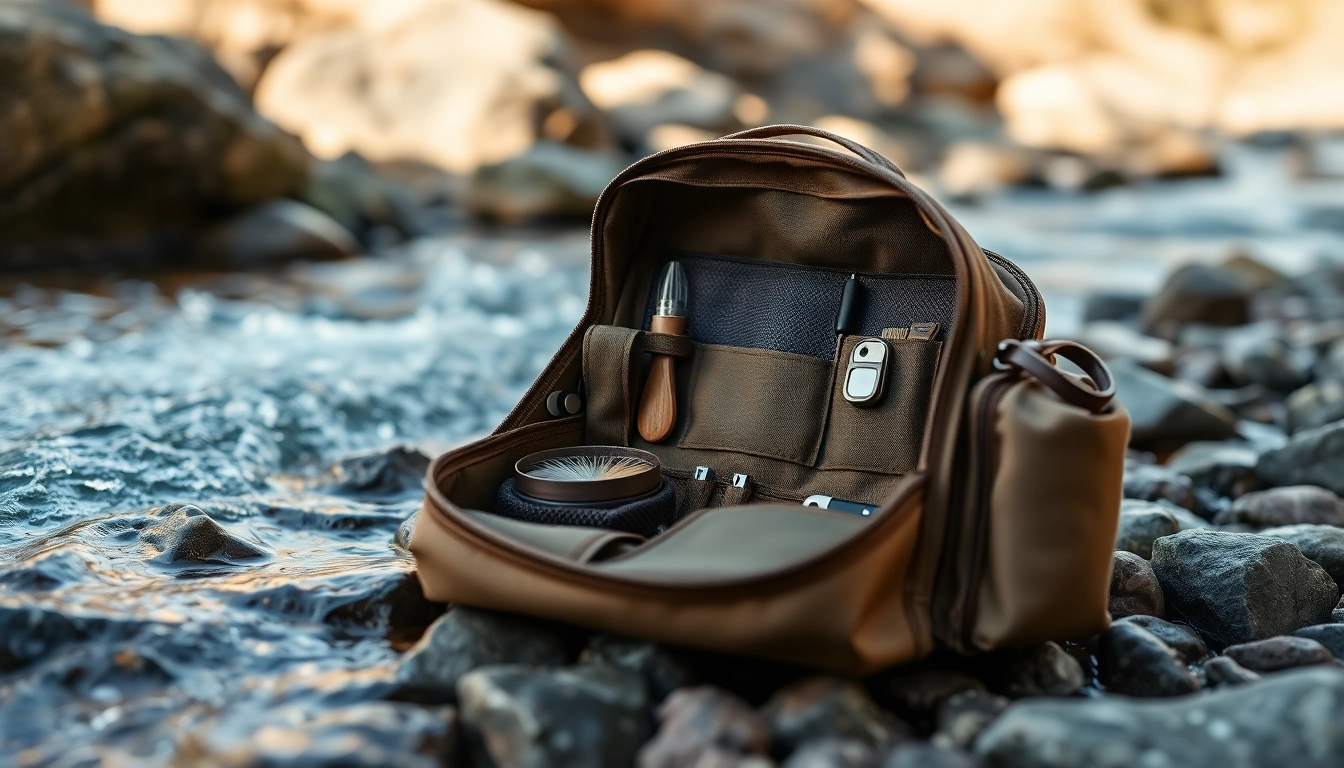Choosing the Right Fly fishing bag: Key Features to Consider
Understanding the Importance of a Fly Fishing Bag
When it comes to fly fishing, having the right gear can make all the difference between a successful outing and a frustrating experience. One of the most crucial elements of an angler’s gear setup is the Fly fishing bag. This essential accessory not only stores your equipment but also helps organize your gear for quick access. Let’s explore why every angler requires a dependable fly fishing bag.
Why Every Angler Needs a Reliable Fly Fishing Bag
A fly fishing bag serves as the hub for your fishing gear, providing a dedicated space to store and transport your essentials, such as flies, tippets, leaders, tools, and more. Without a reliable bag, your fishing experience can quickly become chaotic. It also protects your gear from damage, unexpected weather conditions, and wear and tear, thereby enhancing its longevity.
Essential Features to Look For
Not all fly fishing bags are created equal. When evaluating options, consider the following features:
- Compartmentalization: Look for bags with multiple compartments to keep your tools and accessories organized.
- Water Resistance: Ensure your bag is made from waterproof or water-resistant materials to protect your gear.
- Comfort: Padded straps and ergonomic designs are crucial, especially during long days of fishing.
- Durability: Robust materials and stitching can withstand the rigors of outdoor adventures.
- Accessibility: Quick-access pockets are beneficial for storing frequently used items.
How a Fly Fishing Bag Enhances Your Fishing Experience
Having a well-designed fly fishing bag enhances your overall fishing experience by allowing you to focus on the fishing rather than managing your gear. A good bag helps streamline your process, making it easier to switch flies, access tools quickly, and adapt to changing fishing conditions. This convenience can significantly improve your efficiency and enjoyment, resulting in better days on the water.
Types of Fly Fishing Bags Available
The variety of fly fishing bags available on the market can be overwhelming, but knowing the differences can help you choose the right one for your needs.
Backpacks vs. Sling Bags: Which is Right for You?
Backpacks and sling bags are among the most popular choices for transporting fishing gear. Backpacks typically offer more storage capacity and distribute weight evenly, making them ideal for all-day outings. Conversely, sling bags allow for greater mobility and easier access to your gear without having to remove the entire bag. Depending on your fishing style and preferences, your choice may vary.
Chest Packs and Hip Packs: Pros and Cons
Chest packs and hip packs are excellent options for anglers looking for compact and lightweight solutions. Chest packs keep your tools at eye level, facilitating quick access, while hip packs offer freedom of movement. However, chest packs might not provide ample storage for longer trips, necessitating careful planning. Assess your fishing habits to determine which pack suits your style best.
Specialty Fly Fishing Bags for Different Environments
Different fishing environments may require specific types of fly fishing bags. For instance, if you frequently wade in rivers, a waterproof bag is essential. If you fish from a boat, opt for a bag that can secure well in confined spaces. Understanding your fishing habitat will guide you in selecting the most effective bag type.
Choosing the Right Size for Your Fly Fishing Bag
The size of your fly fishing bag is another critical factor to consider. The right bag not only accommodates your gear but also should be practical for your fishing adventures. Here are some things to think about.
Evaluating Gear Storage Needs
An honest assessment of your gear will help determine the size you need. Consider what equipment you take on every trip and any items that may be exclusive to certain fishing scenarios. Planning ahead can prevent you from overpacking or underpacking.
Compact vs. Spacious Options
Compact bags offer lightweight options for minimalists or for short trips, allowing you to stay agile on the water. On the other hand, spacious bags cater to those who like to carry all possible gear, albeit at the expense of mobility. Factor in the type of fishing you do and how long you typically stay out to decide the best fit for your needs.
Designing Your Organizational Layout
Think about how you will organize your gear when choosing a bag size. Some bags have customizable compartments that help you manage your gear effectively. Additionally, be mindful of frequently accessed items and ensure they are within easy reach while fishing.
Durability and Material Considerations for Fly Fishing Bags
The durability and fabric of your fly fishing bag are pivotal elements that can influence performance and longevity. Let’s delve into some aspects worth considering.
Water Resistance and Weatherproof Materials
Since fishing often involves exposure to moisture and varying weather conditions, it’s vital to choose a bag made from water-resistant or waterproof materials. Bags with sealed seams and water-resistant zippers enhance your gear’s protection, minimizing the risk of water damage.
Types of Fabrics Used in Fly Fishing Bags
Common materials used in constructing fly fishing bags include nylon, polyester, and canvas. Nylon is lightweight and strong, while polyester typically offers better UV protection. Canvas is known for its durability but can be heavier. Select the fabric based on your specific fishing conditions and personal preferences.
Understanding Maintenance and Care Tips
Maintaining your fly fishing bag is essential for ensuring its longevity. Regularly inspect it for wear and tear. Clean the bag with mild soap and water to remove dirt, grime, or salt from seawater fishing. Store the bag in a dry location when not in use and take care to avoid unnecessary exposure to harsh elements whenever possible.
Where to Buy the Best Fly Fishing Bag
Finding the right fly fishing bag often depends on where you choose to shop. Here are some considerations to help guide your purchasing decision.
Comparing Prices Across Different Retailers
Price variation is common across retailers, which is why comparing prices is a good practice. Look for options within your budget while ensuring the features you require are included. Watch for sales or promotions that might allow you to get better products for less money.
Online vs. Local Stores: Where to Shop?
Shopping online presents convenience, as it allows for easier comparison of options and prices. On the other hand, shopping at local stores lets you physically inspect the bag and check its features before making a purchase. Weighing these advantages can help you decide the most suitable shopping method for your new fly fishing bag.
Customer Reviews and Recommendations
Customer reviews can provide tremendous insight into the durability, usability, and performance of a fly fishing bag. Look for feedback from experienced anglers to better understand how well specific bags perform in various fishing situations. Their insights can greatly enhance your decision-making process.














Post Comment